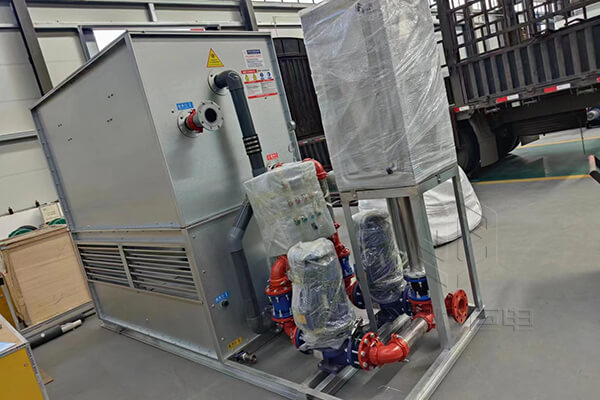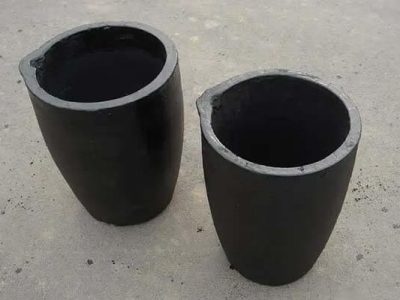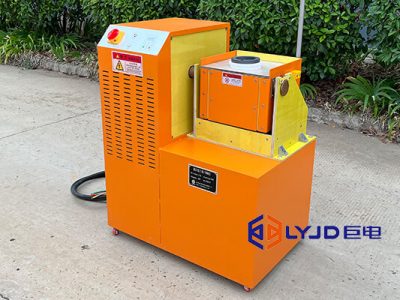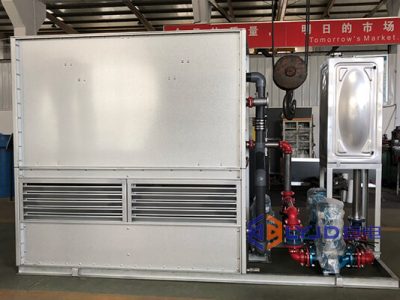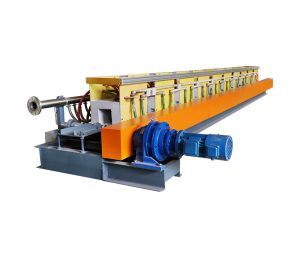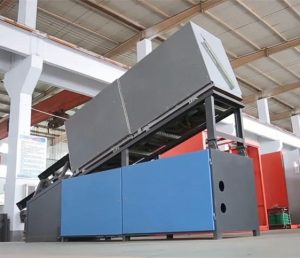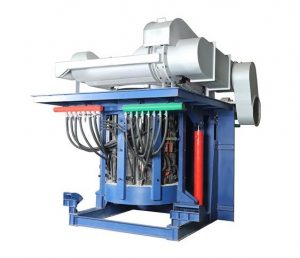The induction furnace will generate a huge amount of heat when working. Therefore, there must be a cooling system to dissipate the heat to avoid equipment damage and to ensure the workers' safety. Today, we will introduce a cooling system, the closed cooling tower for you. That’s the best one I’ve ever seen.
Working Principle of the Closed Cooling Tower
The closed water cooling tower for an induction furnace is a type of cooling system that uses water to dissipate heat generated during the melting process. The working principle of a closed water cooling tower involves the following steps.
The induction furnace generates heat as it melts metal. This heat is absorbed by the water circulating through the furnace's cooling system.
The hot water is then pumped through a heat exchanger within the closed water cooling tower.
As the hot water passes through the heat exchanger, it transfers its heat to the cool air that is flowing across the heat exchanger. The air is drawn in by a fan located at the top of the cooling tower, which creates a natural draft that pulls air through the system.
The cooled water is then pumped back to the furnace, where it absorbs more heat, and the cycle repeats.
The Amount of Water Required for a Closed Cooling Tower
The amount of water required for a closed cooling tower depends on several factors, including the size of the cooling tower, the cooling load of the system, and the temperature of the water. In general, a closed cooling tower operates as a closed-loop system, meaning that the water is recirculated within the system and does not require constant replacement.
Typically, a closed cooling tower requires a minimum of three to five gallons of water per minute (GPM) per ton of cooling, with some systems requiring up to ten GPM per ton of cooling. For example, a 100-ton cooling tower would need approximately 300 to 500 GPM of water flow to operate efficiently.
It is important to note that closed cooling towers require water treatment to prevent the growth of bacteria and scale buildup, which can cause corrosion and reduce efficiency. Regular maintenance, including water treatment and cleaning, can also help to ensure the longevity and optimal performance of closed cooling towers.
It has several advantages over other types of cooling towers. Some of the key advantages of closed cooling towers include:
Water Conservation: Closed cooling towers require less water compared to traditional cooling towers because they operate as a closed-loop system, meaning that the water is continuously recirculated and treated, rather than constantly needing to replace the water.
Energy Efficiency: Closed cooling towers are designed to operate at a higher temperature difference than traditional cooling towers, which allows for more efficient heat exchange and lower energy consumption.
Reduced Maintenance: Because closed cooling towers operate as closed-loop systems, they are less prone to corrosion and scaling, which are common problems with traditional cooling towers. This reduced the need for maintenance, cleaning, and chemical treatment.
Space Efficiency: Closed cooling towers are typically smaller in size than traditional cooling towers, and can be more easily installed in confined spaces.
Environmental Benefits: Closed cooling towers are more environmentally friendly than traditional cooling towers because they require less water use, energy consumption, and chemical treatment. They are also less noisy, which can reduce noise pollution in surrounding areas.
Overall
In summary, the closed cooling tower works by using water to absorb and transfer heat from the induction furnace to the atmosphere. The tower also uses a fan and a heat exchanger to promote efficient heat transfer and cooling. This process ensures that the induction furnace operates at a safe temperature and helps to prolong the lifespan of the furnace by minimizing the risk of overheating.
























